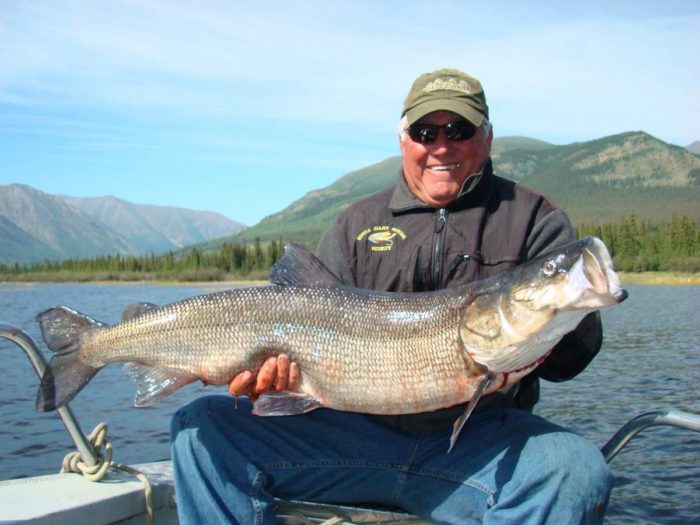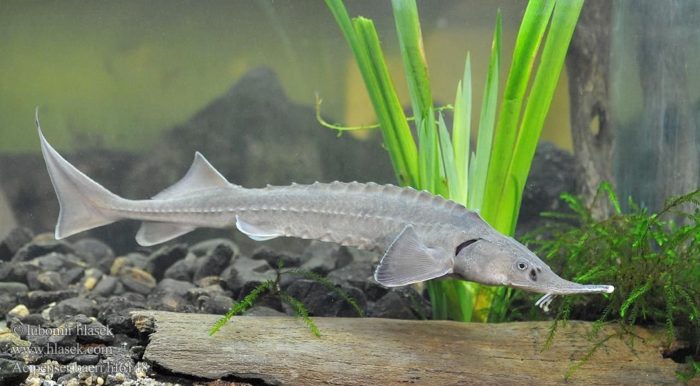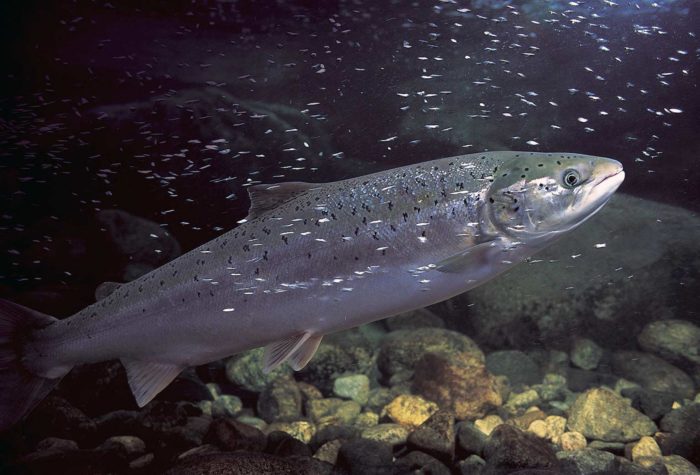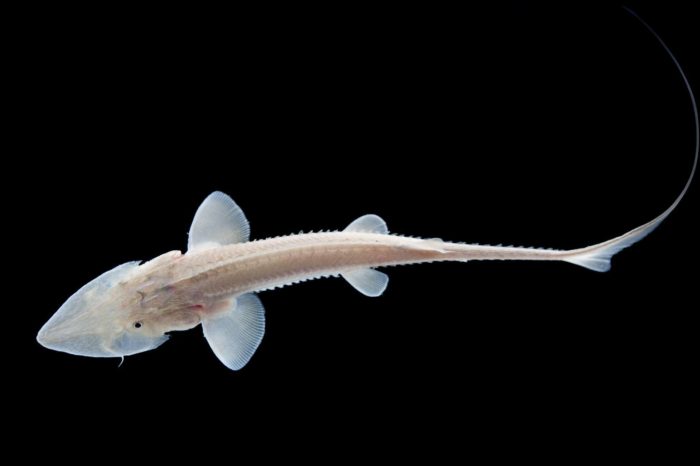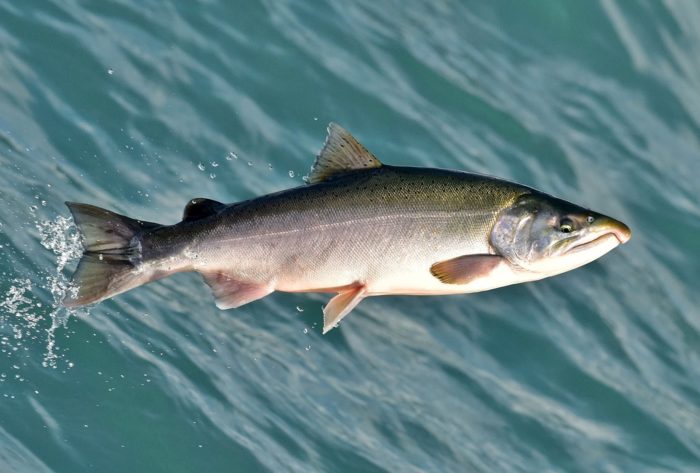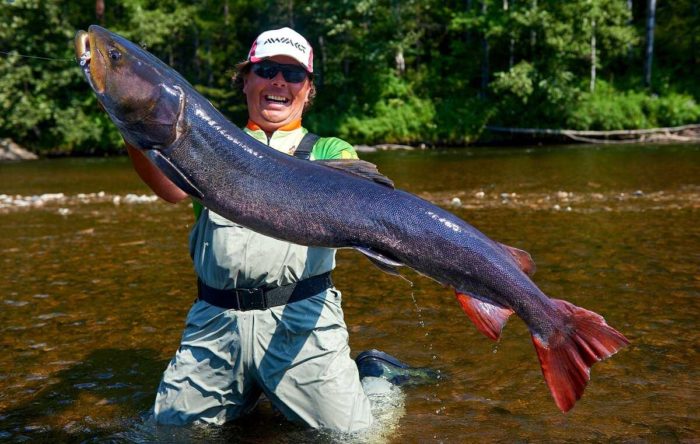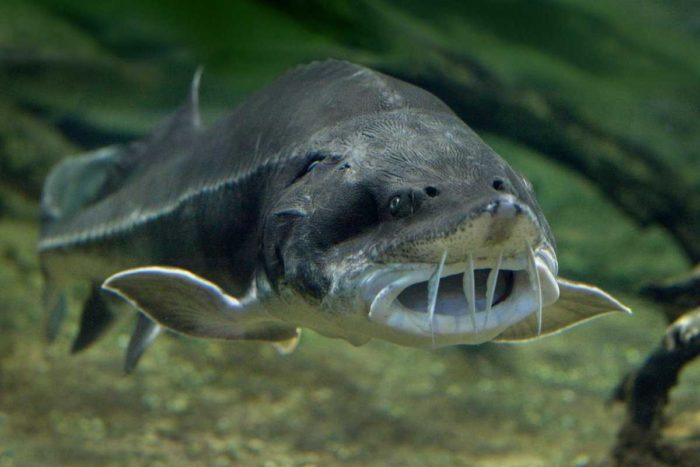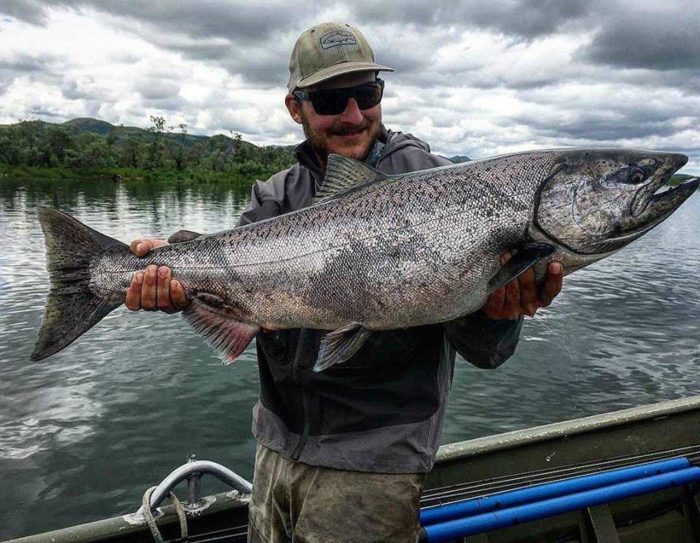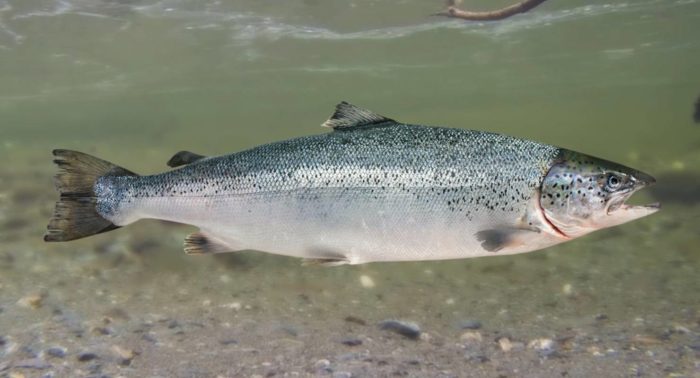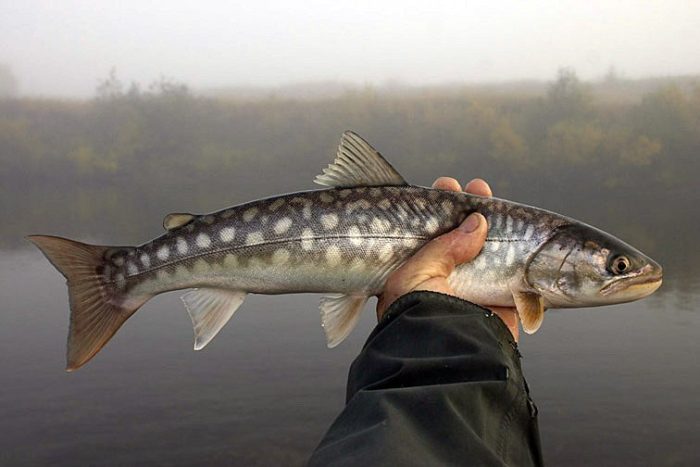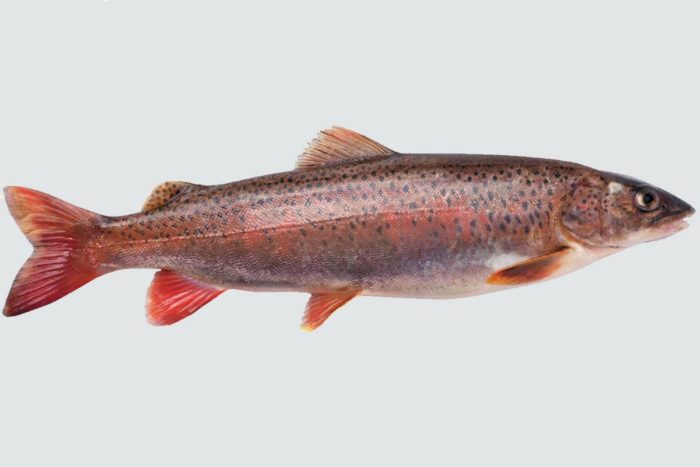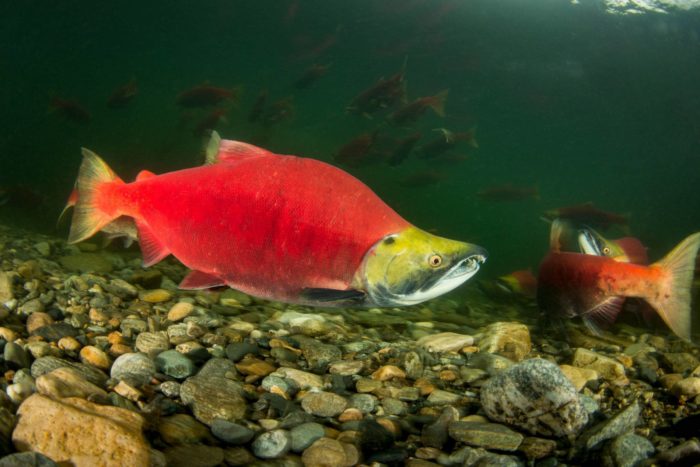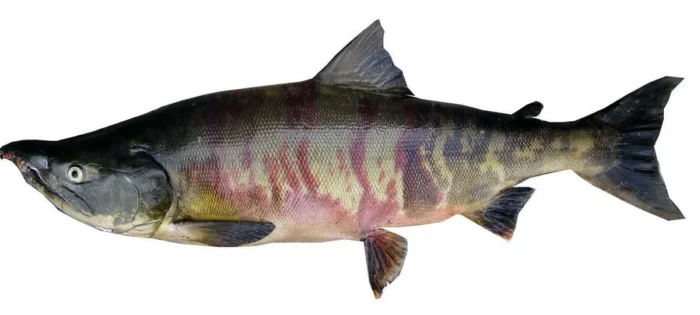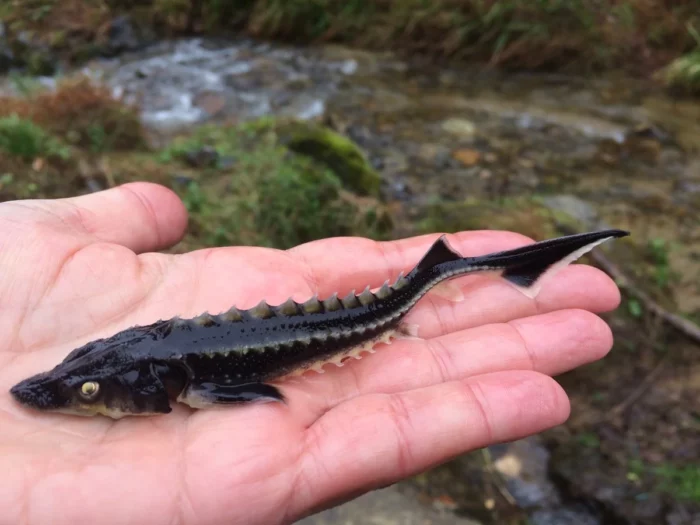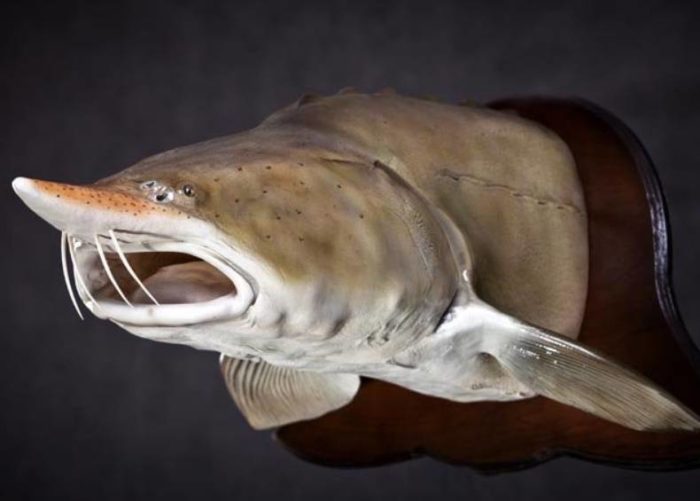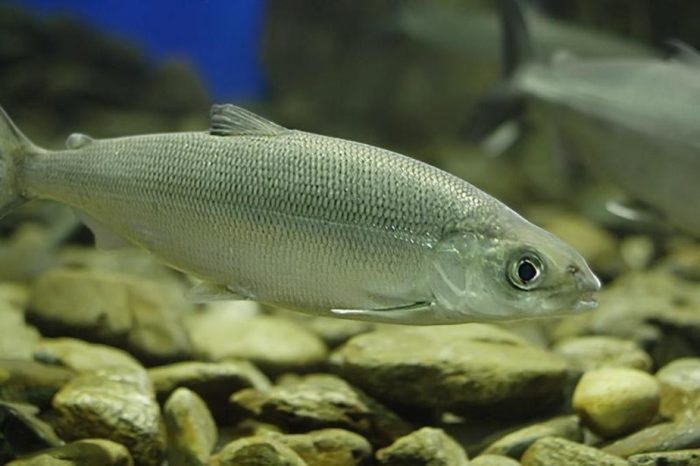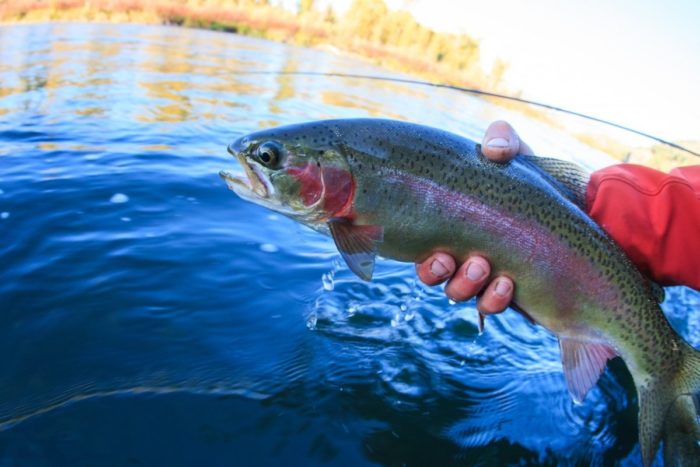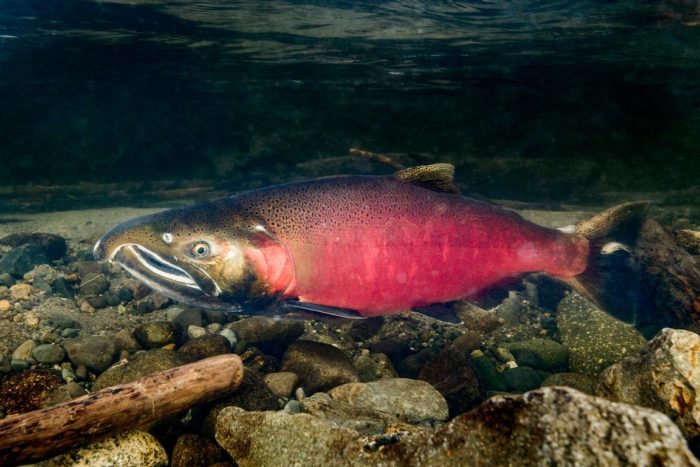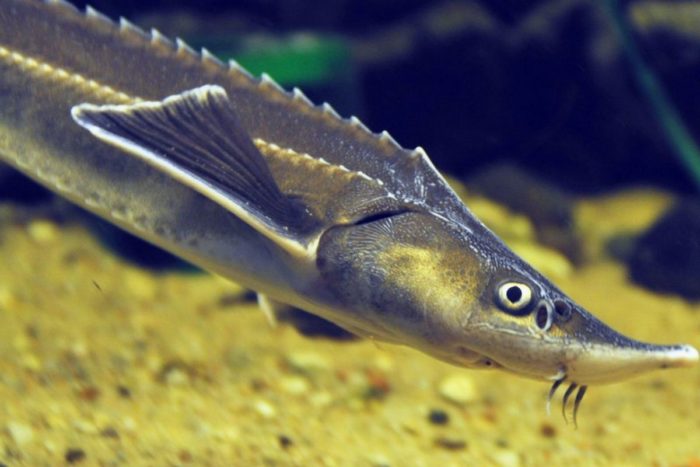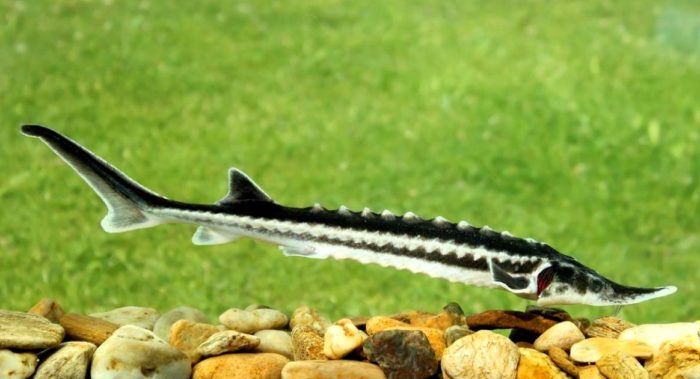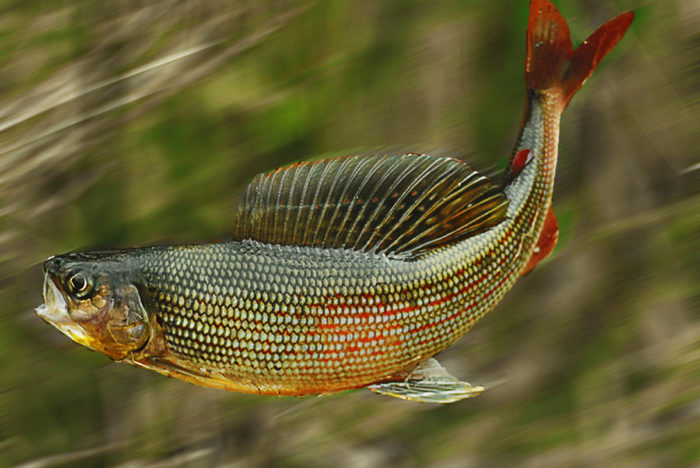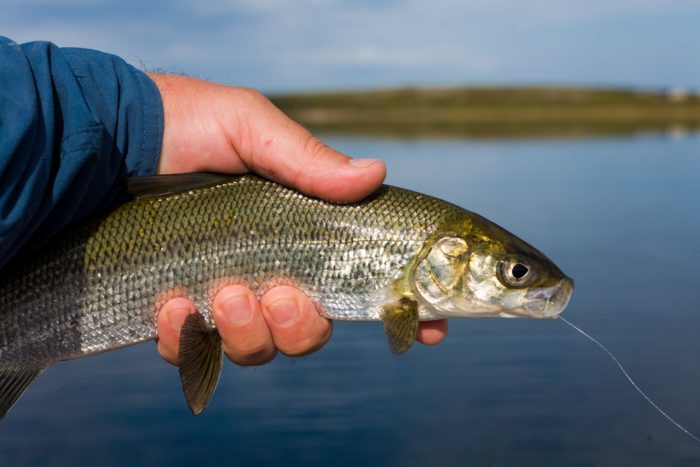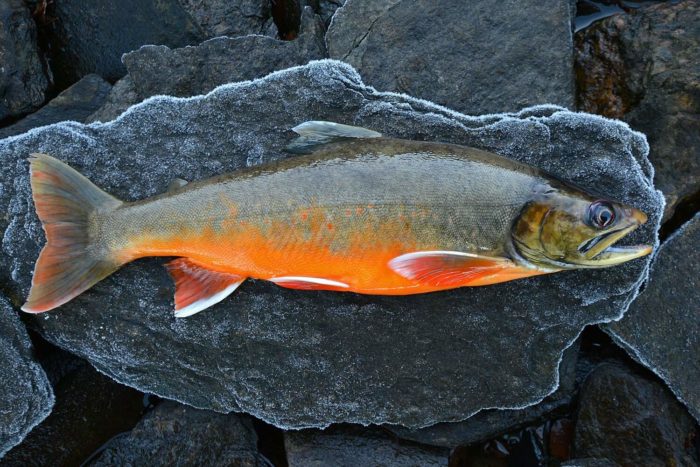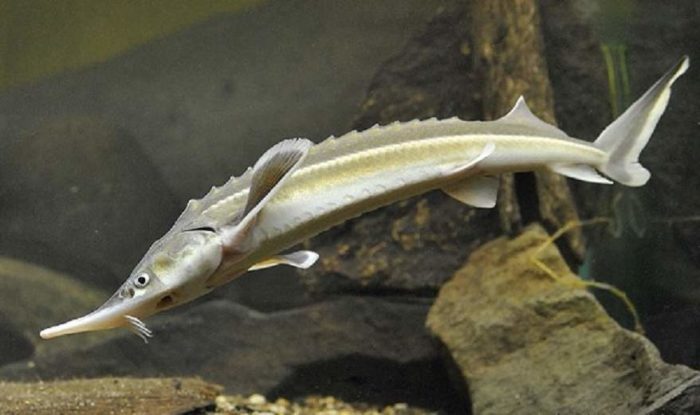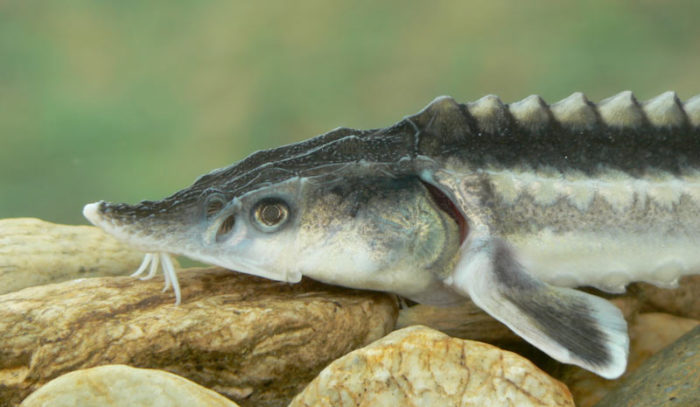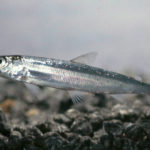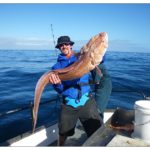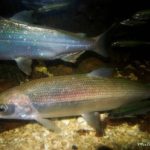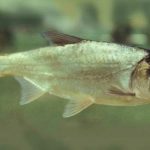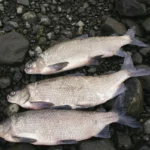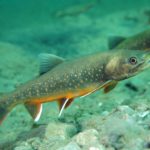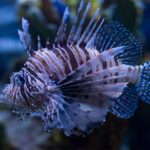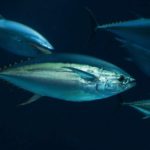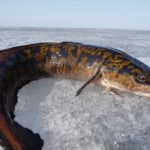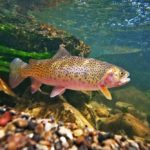Red fish is the name given to the inhabitants of the depths of the sea and rivers, whose meat is considered a delicacy. These include the salmon family, whose fleshy tissues are literally scarlet or orange. But the sturgeon family also belongs to the varieties of red fish, although their meat is white. The fact is that in the old days the word “red” meant “valuable”. Representatives of both families are valued for their taste, beneficial properties, fishing and cooking characteristics.
Belorybitsa
A rare representative of salmon is grown only artificially. The white fish was found in the Caspian Sea, the Volga and the Ural River, but was exterminated by poachers.
Benefits of whitefish:
- meat is a source of protein, B vitamins, fatty acids;
- useful during pregnancy, for diseases of the musculoskeletal system;
- has a delicate taste.
Whitefish is classified as a red fish due to its value. Its white meat is easily divided into plates.
Flaws:
- very greasy and spoils quickly;
- fresh fish can only be tasted in northern cities.
Whitefish can be salted, smoked, and often sold frozen. Balyk is especially famous for its taste.
Siberian sturgeon
Delicious river fish is found in the rivers of Siberia: Ob, Kolyma, Irtysh. The lake species lives in the waters of Lake Baikal.
Advantages of “red” fish with white meat:
- nutritional value, 100 grams of product contains 170 kilocalories;
- The juiciness of sturgeon dishes is comparable to that of pork;
- produces valuable black caviar.
Sturgeons grow up to 2 meters in length. Large specimens weigh 200 kilograms.
Disadvantages of Siberian sturgeon:
- an endangered species;
- fat content, 11 grams of fat per 100 grams of meat;
- Sturgeon caviar is one of the most expensive delicacies in the world.
At the beginning of the twentieth century, Siberian sturgeon was a commercial fish, and in the post-war period, sturgeon caviar was sold in markets in barrels. Now sturgeon is a product that is supplied exclusively by fish factories.
Salmon
True red fish of the salmon family can be found in sea or lake fish and is a delicacy of the highest quality. Habitat of salmon species:
| Name | Area |
| Marine | Northern waters of the Atlantic Ocean
Western waters of the Arctic Ocean Basins of the White and Baltic Seas |
| Ozernaya | Reservoirs of Karelia, Kola Peninsula in Russia.
Lakes of Sweden, Norway, Finland. |
Salmon reaches a length of 150 centimeters and weighs more than 40 kilograms.
Benefits of fish:
- the meat is tender, carrot-colored, with a sweet taste;
- contains easily digestible protein;
- Due to its high content of omega fatty acids, it is beneficial for the heart, blood vessels, and nervous system.
Salmon is also considered an expensive delicacy, but has disadvantages:
- red fish is a strong allergen;
- manufacturers color the meat;
- Product from the USA is genetically modified.
When frying, salmon loses its beneficial properties. Therefore, it is recommended to bake and steam it.
shovelnose
The list of red fish species includes an unusual inhabitant of Mississippi. The shovelnose's muzzle is flat and wedge-shaped, like a sapper's shovel.
Benefits of fish:
- The nutritional value of the meat is equal to that of sturgeon - 160 kilocalories;
- a rare delicacy for Russian gourmets.
The shovelnose has false relatives that live in the Amu Darya River, reservoirs of Turkmenistan and Kyrgyzstan.
Disadvantages of a representative of the water world:
- miniature, length 60-90 centimeters, weight 4.5 kilograms;
- culinary properties have been little studied.
You can try the meat of the true shovelnose only in the USA.
Pink salmon
Another expensive red fish is common in the waters of the Pacific and Arctic Oceans and was introduced into the American Great Lakes and reservoirs of the Kola Peninsula.
Benefits of pink salmon:
- meat is suitable for all types of heat treatment, salting, canning and drying;
- It is caught in large quantities, therefore cheaper compared to sturgeon.
In Norway, the pink salmon population is too huge, so it is deliberately destroyed. Other disadvantages of red fish:
- less nutritious, 103 kilocalories per 100 grams of product;
- one fish produces up to three kilograms of meat.
Pink salmon has very large red caviar.You need to cook fish with the skin on, as it contains fat underneath, which adds juiciness to the dish.
Taimen
The predator of the salmon breed is a native Russian red fish. It lives in the rivers of the Urals, in the Far East, on Sakhalin Island, in the Primorsky Territory and in Buryatia.
Benefits of taimen:
- dietary product, contains only 88 kilocalories;
- the meat is pale pink, medium fat, almost boneless.
Taimen is considered a giant in its family with a length of 2 meters and a weight of 80 kilograms.
Disadvantages of fish:
- the meat is separated by intermuscular layers;
- taimen is tougher compared to salmon;
- high price.
Taimen is listed in the Red Book, and its catch is strictly regulated by quotas.
Beluga
One of the largest bony fish in the world is a sturgeon, lives in the Azov, Caspian and Black Seas, and goes into rivers to spawn.
Beluga benefits:
- widely used in the food industry - meat is used to make balyk, canned food, and vizigu is prepared from the chord;
- Black beluga caviar is aromatic, with a nutty flavor and the most valuable of the sturgeons.
The fish is listed in the International Red Book and is grown only artificially. Flaws:
- dryish tough meat;
- catching in the wild is prohibited.
Beluga dishes are healthy because they contain a lot of protein. The dryness of the meat is explained by the low fat content, but it has a creamy flavor.
The weight of the beluga reaches 1.5 tons with a length of more than 4 meters. It is surpassed only by the sunfish.
Chinook
The inhabitant of the northern seas is the largest among salmonids. In the waters of the Sea of Okhotsk and Barents, there are individuals 100 centimeters long and weighing 17 kilograms.
Benefits of Chinook:
- meat and caviar are rich in selenium, magnesium, phosphorus and the antidepressant substance tryptophan;
- Chinook products are easy to digest;
- replaces pork in a weight loss diet.
Chinook salmon is eaten lightly salted, dried, fried, smoked. In America it is cooked over coals and hot bricks.
Flaws:
- caviar contains a lot of sodium, the safe norm for health is 5 teaspoons per day;
- meat contains a small amount of mercury, so it is not recommended to consume it during pregnancy and breastfeeding;
- fishing is paid and allowed in fish farms.
Old fish accumulate toxins, and young fish may be infected with parasites. Chinook salmon must be purchased at breeding sites or if the seller has a quality certificate.
Far Eastern salmon
The most common type of red fish in stores is caught in the northern waters of the Atlantic and Pacific Oceans. It is also found in the United States in the Great Lakes.
Advantages of Far Eastern salmon:
- contains a lot of vitamin D and omega fatty acids;
- The natural color of the meat is orange-red, the taste is soft and delicate.
The economy of Kamchatka, Khabarovsk Territory and Sakhalin Island is based on salmon production.
Flaws:
- salmon populations are declining;
- may be infected with parasites.
Salmon is consumed fried, smoked, and salted.
Kunja
The Pacific representative of red fish is found near Kamchatka, the Commander Islands and the island of Hokkaido. Freshwater kunja are found only in Lake Shikotsu. The color of its meat depends on the season: white in spring, pinkish in autumn.
Product advantages:
- the taste is reminiscent of trout;
- The protein content in 100 grams of meat is 70 percent.
Kunja is allowed for sport fishing. Most often it is caught using a spinning rod. Industrial fishing is concentrated in Japan.
Flaws:
- a rare and expensive product in Russia;
- may cause allergies.
The calorie content of kunja depends on the method of preparation: fried fish is more nutritious than boiled fish.
Lenok
The freshwater predator is found in the Far East, reservoirs of southern Mongolia, and western Korea. In past centuries, lenok formed the basis of the diet of Siberians.
Benefits of fish:
- white pulp is a natural source of chromium, important for normalizing metabolism and sugar levels;
- This delicious juicy product is rich in proteins and fats.
Lenok is consumed fried, dried, or smoked. It is used to prepare soups, appetizers and salads. Salted fish is soaked in fat and acquires a pleasant taste. Tender meat is obtained by baking in foil.
Flaws:
- slow growth - lenok gains weight of 3 kilograms at 12 years. Its lifespan is 15 years;
- Fishing in natural habitats is prohibited.
Lenok fish are bred in farms, and then the fry are released into rivers.
Red salmon
The Pacific red fish sockeye salmon is known in Japan, North America and Russia. The classification classifies it as a salmon. Externally, sockeye salmon resembles its relative chum salmon.
Advantages:
- the meat is naturally rich red, valued for its high phosphoric acid content and antioxidant effect;
- It has a naturally rich taste, so no food additives or dyes are used in the production of sockeye salmon products.
Due to its natural taste and beneficial properties, fish is especially respected by the Japanese.
Flaws:
- accumulates toxins, especially during spawning;
- Contraindicated for allergies and diseases of the intestines and stomach, as well as for children under five years of age.
Industrial fishing in Russia was completed in 2010. Sockeye salmon is a rare commodity in stores. The product must be certified to avoid parasitic infection.
Chum salmon
Red fish from the salmon family is an object of active fishing. Chum salmon is found in the northern seas: Okhotsk, Bering, and Japan. It is mined using nets in the Amur.
Advantages:
- widespread in natural habitats;
- relatively inexpensive of all salmon;
- Meat and caviar have beneficial properties.
Chum salmon is contraindicated only for allergy sufferers, it is quickly absorbed, and thanks to omega fatty acids it reduces the risk of developing Alzheimer's disease.
Flaws:
- meat is not suitable for frying, as it loses its taste and becomes dry;
- Fresh fish has a short shelf life of 2 days.
Chum salmon is baked in foil or pots, steamed, salted and smoked. When salting fish, no salt is spared, so it is recommended to keep it in water before eating.
Thorn
The inhabitant of warm seas is distinguished by spines along the back and upper parts of the sides. Its natural habitat is the Black, Caspian and Aral Seas.
Advantages:
- pleasant sour taste, aroma of the sea;
- When cooked, the fillet retains its original weight;
- contains protein that is 98 percent digestible.
In the 30s of the last century, 500 tons of thorn were caught in Russia per year. After 30 years, the catch had dropped to six tons. Currently, thorns are bred artificially.
Flaws:
- an endangered species in Russia, listed in the Red Book;
- refers to common allergens.
The spikiest red fish is rarely found in stores, but is famous in the form of balyk and as an ingredient for fish soup.
The thorn crosses with stellate sturgeon and beluga, therefore, according to some scientists, it is not worthy of being identified as an independent species.
Kaluga
The freshwater relative of the beluga from the sturgeon family is of interest to science as a specific inhabitant of the Amur River basin. Kaluga is able to adapt to salt water and migrate to the sea.
Advantages:
- big weight, 1 ton with a length of 5 meters;
- boneless fillet.
Kaluga has almost disappeared from its natural habitat. Its fishing is prohibited, and artificial cultivation is established in China.
Flaws:
- the calorie content is close to sturgeon - 163 kilocalories;
- record price.
Kaluga is recognized as the most expensive fish in Russia, ahead of barramundi and tiger shark. In 2023, a kilogram of its meat is estimated at 1 million 250 thousand rubles.
Omul
Red fish includes another representative of salmon, which in appearance resembles whitefish. Based on their habitat, there are two types of omul:
| Name | Area |
| Arctic | It lives in the Arctic Ocean, spawns in the rivers of Alaska, Canada and northern Russia. |
| Baikal | Found in Lake Baikal, endemic |
Omul is small, 64 centimeters in length and 3 kilograms in weight. Advantages:
- due to its low calorie content (90 kilocalories) and richness in protein, it can replace animal meat;
- There are few bones in the fillet.
Fishing for omul is not carried out on an industrial scale. Fishing is allowed on Lake Baikal, but not during the spawning season.
Disadvantages of fish:
- Baikal omul is infected with parasites;
- a rare item for stores.
Sea omul is eaten raw, salted, smoked, but lake omul must be well fried.
Trout
Truly red fish with brightly colored fillets can be sea and river, rainbow and stream. Trout lives in the Baltic Sea basin, Karelian rivers, and Lake Issyk-Kul.
Advantages:
- meat of the marine variety is valued more for its lack of odor and rich color;
- source of protein, saturated fatty acids, vitamin D.
Trout does not accumulate toxic substances and does not contain mercury.
Flaws:
- river fish fillet smells like mud and is pale;
- causes allergies.
Trout serves as an indicator of water purity. When contaminated, sensitive fish are the first to die.
Coho salmon
The habitat of one of the most delicious representatives of salmon is wide: the North American waters of the Pacific Ocean, the Kamchatka coast, the northwestern waters of the Sea of Okhotsk, tributaries of the Amur, the Sakhalin and Hokkaido rivers.
Benefits of red fish:
- meat contains molybdenum, zinc, chromium;
- not bony;
- It tastes better than salmon and chinook salmon, and costs less.
Coho salmon fish farms are located in Japan and Chile. This valuable product is imported to Russia.
Flaws:
- calorie content is higher than that of sturgeon - 171 kilocalories;
- Sometimes there is bitterness in the fillet.
Coho salmon turns out tastier lightly salted - a tablespoon of coarse salt and granulated sugar per half a kilogram of fish.
Sterlet
Sturgeon fish is common in European rivers that flow into the Caspian and Black Seas, as well as in Siberian rivers and the Yenisei. The sterlet is miniature compared to its relatives - 40-60 centimeters in length, weighs up to two kilograms.
Advantages:
- black sterlet caviar is considered a delicacy;
- The meat is tender, dietary, reminiscent of chicken.
The fish is considered red for its nutritional value. She has a white fillet, and the backbone consists of cartilage.
Flaws:
- endangered species, listed in the international Red Book;
- contraindicated in diabetes;
- high calorie content, 100 grams of Siberian fish fillet contains more than 200 kilocalories.
Sterlet is the heraldic symbol of Belozersk, Yeisk, Rybinsk and Saratov.
Stellate sturgeon
Another representative of sturgeon with a special appearance: an oblong stigma, an elongated dark body, light scales. The size of the stellate sturgeon reaches 1.5 meters, and its weight is 12 kilograms. Habitat: Caspian, Black Sea basin.
Advantages:
- contains collagen, iodine, omega-3 and omega-6 fatty acids;
- fat content of meat is 11 percent, caviar is 10 percent.
Stellate sturgeon is grown artificially, crossed with sterlet and thorn.
Flaws:
- prohibited from catching in the wild due to low numbers;
- short shelf life of fresh and smoked - 2 days.
In the last century, tens of tons of sturgeon were caught. By the third millennium, its population had declined critically due to fishing and poaching.
Grayling
A representative of the red fish, which is allowed to be caught in the wild, lives in the rivers of Siberia and Kamchatka. A characteristic external feature of grayling is its large sail-shaped dorsal fin.
Advantages:
- meat does not accumulate toxins and does not cause allergies;
- The product is allowed to be used during pregnancy and for children over 1 year of age.
Among fishermen, grayling is considered a beautiful fish due to its bright shiny scales of green or black color, with orange or purple fins.
Flaws:
- the meat has small bones that need to be removed when filleting;
- perishable product.
Grayling lives in clean, cool water and rarely picks up parasites. It is eaten raw and salted.
Whitefish
Salmon river fish is common in water bodies of Europe, North America and Asia. Due to its wide habitat, there are more than 60 species of whitefish. Some European and Great Lakes species have become extinct.
Whitefish benefits:
- tender meat contains a large supply of folic acid, vitamin D and A;
- has no bones except the spine and ribs;
- permitted for recreational fishing, with the exception of the spawning period.
Whitefish are caught with a spinning rod and a donkey. A fish 15-50 centimeters long weighs within one kilogram.
Flaws:
- spoils quickly after catching;
- causes allergies and can become a source of parasitic infection.
Specimens weighing 12 kilograms are rare. Whitefish is a red valuable fish, but its meat is white.
Whitefish cannot even be stored frozen. It must be cooked immediately after catching, salted and smoked.
Char
The cold-loving fish is found in the Far East of Russia, in the lakes of Altai and Karelia. It is found in abundance in its natural habitat.
Benefits of char:
- the meat is bright orange in taste and tastes similar to trout;
- average calorie content, 135 kilocalories per 100 grams of product.
To catch char, fly fishing and spinning are used. Fish is not considered a delicacy or expensive, since it is not yet in short supply.
Flaws:
- river fish are usually infected with parasites;
- cannot be eaten without careful heat treatment.
Before salting, the loach is kept for 2 weeks at a temperature of -18 degrees or 72 hours at -25 degrees to neutralize helminths.
Bester
The beluga-sterlet hybrid is recognizable by its white-gray coloration, jagged dorsal fins and shark-like tail. Bester is bred only at fish factories in Russia and Europe.
Benefits of fish:
- the meat has a record low fat content - 0.7 grams;
- Caviar tastes similar to sturgeon.
The taste of bester is better revealed after boiling or steaming. Balyk turns out to be especially tasty.
Flaws:
- high price;
- absent in nature.
Bester is not allowed to swim freely in natural reservoirs so that the hybrid does not spoil purebred fish.
Russian sturgeon
An inhabitant of the Caspian, Azov and Black Seas swims out to spawn in rivers and is found in the Kuban, Volga, Ural, and Don. The weight of a large Russian sturgeon reaches 25 kilograms.
Advantages:
- black caviar is second only to beluga in value;
- meat is rich in easily digestible protein.
The Russian sturgeon is on the verge of extinction in the wild. This is one of the first fish that began to be artificially bred. Flaws:
- Due to the high sodium content, it is recommended to consume in moderation;
- fishing is prohibited.
Despite its conservation status, enshrined in the international Red Book, Russian sturgeon is caught illegally for its valuable black caviar.

